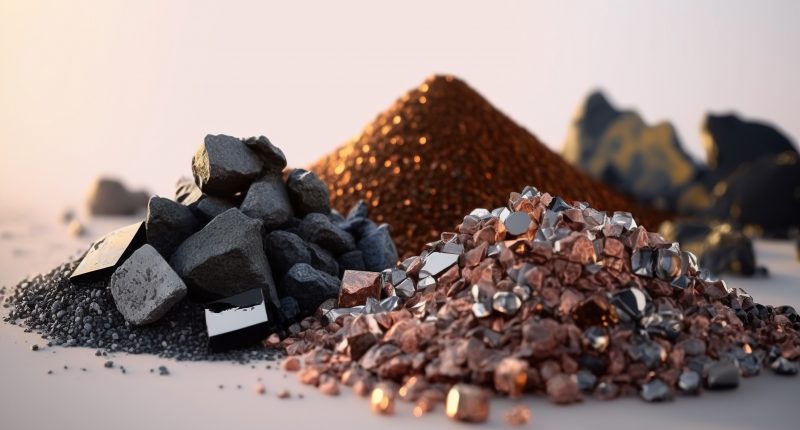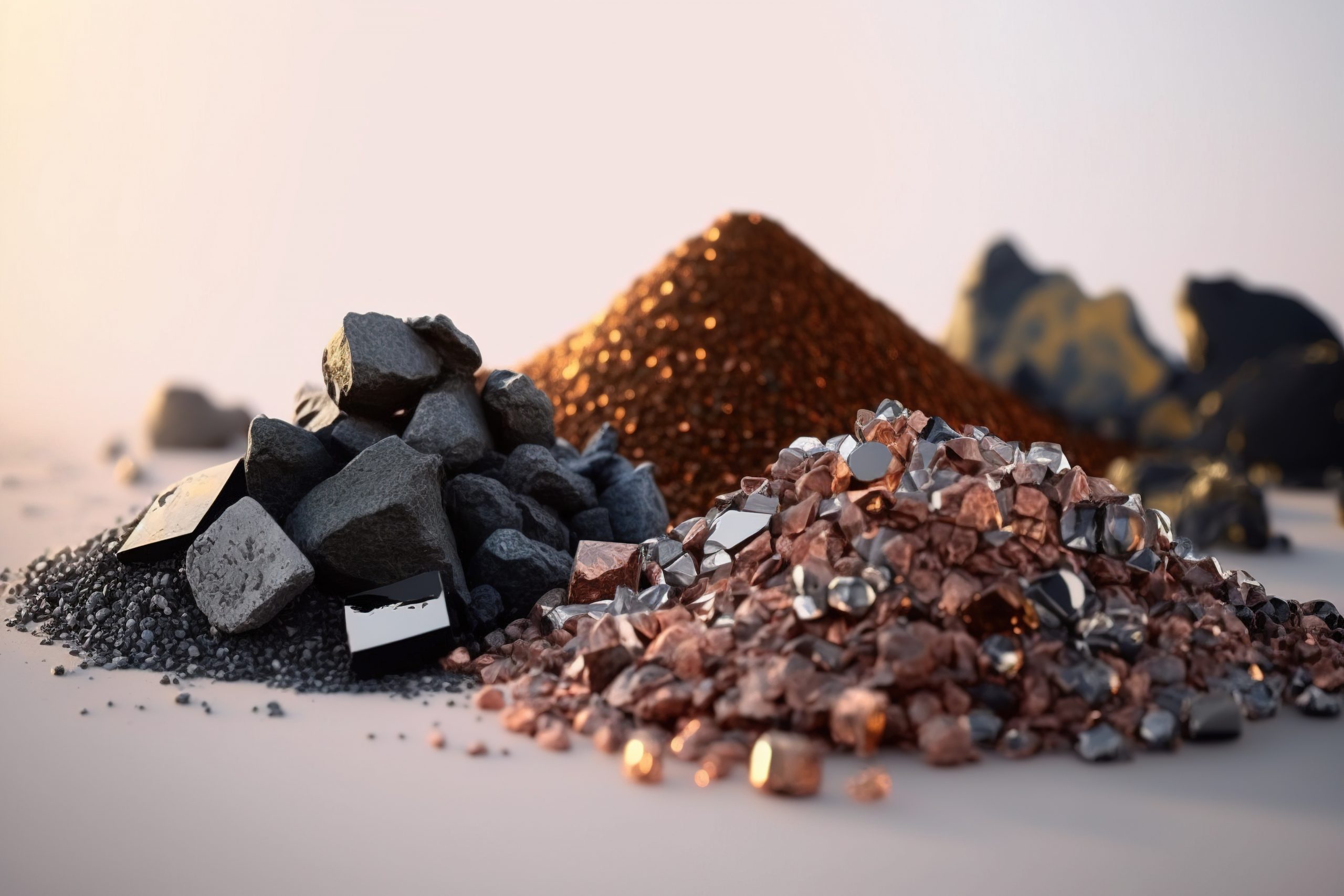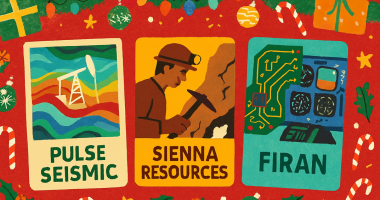Rare earths (REEs) are critical to producing permanent magnets used in consumer electronics and electric vehicles. Ucore Rare Metals (TSXV:UCU) (OTCQX:UURAF) is a company focused on separating rare earth elements and supplying the resultant rare earth oxides to the automotive industry in North America, something no other company is doing. Key to achieving this is their strategic metals complex (SMC) in Louisiana.
Ucore CEO Pat Ryan joins The Market Herald for an informative discussion.
Ucore is currently raising up to $5.35 million through a brokered private placement and is open to all investors under LIFE rules (Listed Issuer Financing Exemption).
TMH: Pat, rare earths are used by multiple industries, why has Ucore focused specifically on the automotive industry?
PAT RYAN: Well, the automotive industry is a very significant part of our global economy. Of course, transportation is huge. There are primary markets in Europe, North America and the far east. The transition to electric vehicles is all part of reducing CO2 in the atmosphere. So in order to reduce CO2, electrification of vehicles is a big path forward.
My career has been in the automotive industry. I founded a tier one automotive company 26 years ago, I was a very young mechanical engineer and as a result of that, I’m very in tune with what companies are doing, where their billions of dollars are being spent and could certainly see most recently that the transition to electric vehicles is upon us and it’s all part of a CO2 reduction plan going forward, which is necessary for climate change, trying to keep that one-and-a-half to two degrees Celsius lower.
If you look at 2022, there were actually 10.5 million electric vehicles made in the world and of those 10.5 million electric vehicles, about 6.3 of them were made in China, which is amazing. So, two out of the three electric vehicles were made in China. One might ask, “Well, how did that happen?” How it happened was the technology used in these vehicles, the critical minerals that are needed as inputs and there’s six times more critical minerals than electric vehicle than are an internal combustion engine vehicle. They’re controlled by China and as you look at three automotive markets and the western world, what it must do, you need to re-establish metallic supply chains back in the west. So Ucore has been very focused on let’s get that control of transportation jobs, automotive electric vehicle jobs back from China back into the Western world. In order to do that, you need the raw material inputs.
We’re focused on rare earth because rare earth goes into permanent magnets. Those permanent magnets go into the electric motors, and they’re vital to driving any automotive EV electric vehicle forward. So that’s where we’re focused. We’ve got a commercial demo plant in Kingston. It uses our rapid SX technology. It’s evolving very nicely. We have qualifying trials for automotive companies going on there right now and we have a bigger commercial plant plan for Louisiana, we call it our Strategic Metals Complex, or SMC as you’ve noted and the state of Louisiana has been great. They’ve put for forward 20 million in incentives for us to set up in Louisiana and again, it’s needed in order to break the script from China.
We also had a most recent award from the US Department of Defense and that particular award was to say, take your technology, let’s develop it further towards commercialization. It was a $4 million US award but the beauty of that particular award is that it’s open ended. It allows you to have an add-on contract, which funds the plant forward in Louisiana, so we’re looking forward to that opportunity with the US DOD for that side of it as well. It’s a big job but we’re in the right place at the right time, so lots to do.
TMH: How has Ucore validated its thesis of supply stability to the automotive industry in conjunction with the government supporting as a top priority?
PAT RYAN: I mentioned the government award and that is validation. It’s validation for our technology, it’s validation for our business plan. We started discussions with the Pentagon about a year ago. There was a lot of back and forth, a lot of in-depth analysis of what our technology would do. The only technology used in the world today to separate out from a resource individual rare earth oxides that are used in these permanent magnets is called solvent extraction. Our technology is known as Rapid SX or Rapid Solvent Extraction and it’s based upon the principles of ESG. So when I say ESG, it means smaller footprint, less CAPEX, less chemicals, less reagents, less people touch time, just an all around better approach to westernizing a processing technology that’s needed. So that’s certainly a credibility marker and then there’s the size of the market too.
The size of the market is significant. It’s projected to be $32 billion by the end of the decade. Half of that or about $15.7 billion is the Ex-China market and that’s what Ucore is pursuing. We’re pursuing the Ex-China market of that 15.7. We’re building strategic metals complexes. We’re looking to joint venture with raw earth concentrate companies in order to develop the inputs for the automotive companies as well and it sort of validates everything going forward. The technology, the award from the government, the size of the market, again, right place, right time.
TMH: In March you held private tours at your demonstration plant, what did you and your team learn from this process?
PAT RYAN: They were very private tours. The plant itself is in Kingston, Ontario. We’re working with Kingston Process Metallurgy. They’re probably one of the top metallurgy companies in North America. They’re really akin to taking technologies that have a good chance for commercialization and actually bringing them to commercialization. So what we did is we invited in resource companies that were from the upstream, so companies that were from Argentina, from Africa, Australia, Canada, all of them having resource opportunity and bringing them in to show them what we’re doing in Kingston, which is a plant that’s designed to process multiple types of feedstock, both heavy and light earth. There’s no heavy earth processing in North America today. We brought in a number of government people so they could see at the state and federal level from the US or at the provincial and the federal level in Canada, see exactly what we were doing because there was a lot of money being put forward to fund programs for getting this job done for North America, for the western world and we also had automotive customers, other downstream users come in as well and see what we were doing. People in the wind energy field, electrification of vehicles, people that were in the metal alloy making and understanding how this commercial demo plant could turn into something very significant, which is the commercialization of the rare earth oxides for North America.
TMH: Why is no one else doing what Ucore is doing in North America?
PAT RYAN: I think there’s a lot of focus on the resource side. So when people hear we need more critical minerals, the gravitation is, let’s go to a mine, let’s build a mine And when you build a mine, it takes seven to eight to sometimes ten years to bring on board. That’s because there’s a lot of permitting, a lot of legislative hurdles that you have to go through and so companies are already focused on hundreds of millions of dollars to bring mines on board to provide the critical minerals, but I think that the one eureka moment for Ucore was to realize that if you bring a mine on board, you still have to refine it into something that’s usable and the only opportunity to refine those rare earth concentrates right now is to send them back to China.
That’s not independence and so Ucore got very fixated on the fact that you could build a separation plant using best in-kind Western technology, a much smaller footprint, permitting that can get done under a year with the right engineering plan and really start to deliver for the mid-market, which is where China’s taken control, and deliver that mid-market back to North America. So I think people have done a very noteworthy thing by saying, we need more rare earths and other critical mineral inputs to mine but the separation is key and that’s where we’re focused.
TMH: What’s your process and timeline to start operations at the commercial SMC in Louisiana (that’s the Strategic Metals Complex for investors)?
PAT RYAN: Our current plan is that by the end of 2024, we will start to process 2,000 ton per annum and that’s ex-cerium and ex-yttrium, and then it will grow to a 5,000 ton per annum plant and although that sounds like it’s not huge, it’s actually taking a good chunk out of what’s needed in the ex-China market. From 5,000 will grow to 7,500 but by the end of 2024, the plan is to be up and running with 2000 ton, we can run more hours around the clock and get to 3,800 ton and then we’ll put a little more CAPEX in place and we’ll be able to grow it to 5,000 ton annum. That 5,000 ton annum will happen by the first part of 2026 but the main thing is to be first mover, start serving customers and that intent is by the end of 2024.
TMH: Is there anything we’ve missed, you would like to cover?
PAT RYAN: No, I think it’s an interesting point in time. It’s a once in a generation transition of energy. Wind energy, electric vehicles, things that reduce CO2 in the atmosphere. It’s probably the first time in a hundred years that we’ve had this type of transition. Ucore is in the right place with focusing on critical mineral processing, beginning with the rare earths side, the technology because of its uniqueness, anything used with solvent extraction, you can actually also use for other critical minerals. So something like copper for example, you could look at copper but we’re very focused on getting revenue first with rare oxides and then we’ll look at other opportunities that might exist but once in a generation opportunity, it’s an important job for the Western world to get done what’s being done right now, which is let’s break this intentional grip that China has developed over a 40 year timeframe and again, right place, right time and we’re excited about what the future holds.
Ucore is currently raising up to $5.35 million through a brokered private placement. Investors can learn more about the investment opportunity that qualifies under LIFE rules allowing all investors to participate, here.
This is sponsored content issued on behalf of Ucore Rare Metals, please see full disclaimer here.






